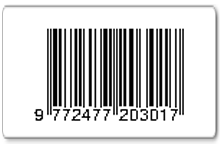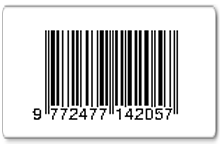Chemistry Teachers’ Perceptions on STEM (Science, Technology, Engineering, and Mathematics) Education
Abstract
Perception is a process of using the knowledge that a person has in interpreting an object. This study aims to determine the perceptions of Islamic senior high school chemistry teachers in South Tangerang, Indonesia towards STEM (Science, Technology, Engineering, and Mathematics) education. This study used descriptive qualitative method. The instrument used was an online questionnaire containing 17 questions with opened and closed forms, then the results were analyzed using hermeneutic techniques. Based on the results, it can be concluded that Islamic senior high school chemistry teachers in South Tangerang, Indonesia have a perception that STEM education is needed in learning.
Keywords
Full Text:
PDFReferences
Aberilla, OD, Salic, MH, Orbita, RR, Bagaloyos, JB , Demayo, CG, & Torres, MAG 2021, ‘University students’ acceptance of evolution: basis for STEM-based instructional design’, International Journal of STEM Education for Sustainability, vol. 1, no. 1, pp. 33-44.
Abdioğlu, C, Çevik, M & Koşar, H 2021, ‘Investigating STEM awareness of university teacher educators’, European Journal of STEM Education, vol. 6, no. 1, pp. 1-18.
Acar, D, Tertemiz, N & Taşdemir, A 2018, ‘The effects of STEM training on the academic achievement of 4th graders in science and mathematics and their views on STEM training teachers’, International Electronic Journal of Elementary Education (IEJEE), vol. 10, no. 4, pp. 505-513.
Adeyemo, SA 2010, ‘The impact of Information and Communication Technology (ICT) on teaching and learning of physics’, International Journal of Educational Research and Technology, vol. 1, no. 2, pp. 48-59.
Anggraini, FI & Huzaifah, S 2017, ‘Implementasi STEM dalam pembelajaran IPA di Sekolah Menengah Pertama’, Prosiding Seminar Nasional Pendidikan IPA 2017: STEM untuk pembelajaran sains abad 21, Universitas Sriwijaya, Palembang, pp. 722-731.
APJII 2017, Infografis Penetrasi dan Perilaku Pengguna Internet Indonesia. viewed 11 July 2019, .
Basham, JD & Marino, MT 2013, ‘Understanding STEM education and supporting students through universal design for learning’, Teaching Exceptional Children, vol. 45, no. 4, pp. 8-15.
Bechtle, M 2014, Percaya Diri dalam Berkomunikasi, Nafiri Gabriel. Jakarta.
Diekelmann, N, Allen, D, Tanner, C 1989, The NLN Criteria for Appraisal of Baccalaureate Programs: a critical hermeneutic analysis, National League for Nursing. New York.
El-Deghaidy, H & Mansour, N 2015, ‘Science teachers’ perceptions of STEM education: possibilities and challenges’, International Journal of Learning and Teaching, vol. 1, no. 1, pp. 51-54.
El Nagdi, M & Roehrig, G 2020, ‘Identity evolution of STEM teachers in Egyptian STEM schools in a time of transition: a case study’, International Journal of STEM Education, vol 7. no. 41, pp. 1-16.
Evangelisto, C 2021, ‘Critical thinking in STEM: a qualitative study of community college teaching techniques’, Journal of STEM Education, vol. 22, no. 2, pp. 46-52.
Farwati, R, Metafisika, K, Sari, I, Sitinjak DS, Solikha, DF & Solfarina, S 2021, ‘STEM education implementation in Indonesia: a scoping review’, International Journal of STEM Education for Sustainability, vol. 1, no. 1, pp. 11-32.
Fitrianasari, H 2015, ‘Persepsi Guru Terhadap Penyelenggaraan Pendidikan Inklusif Sesuai Latar Pendidikan di Kabupaten Blitar’, SPD skripsi, Universitas Negeri Surabaya, Surabaya.
Hakiim, L 2009, Perencanaan Pembelajaran, CV Wacana Prima. Bandung.
Hamalik, O 2005, Perencanaan Pengajaran berdasarkan Pendekatan Sistem, Bumi Aksara. Jakarta.
Jiang, H, Wang, K, Wang, X, Lei, X & Huang, Z 2021, ‘Understanding a STEM teacher’s emotions and professional identities: a three-year longitudinal case study’, International Journal of STEM Education, vol. 8, no. 51, pp. 1-22.
KBBI (Kamus Besar Bahasa Indonesia) online, viewed 10 January 2019, .
Kelley, TR and Knowles G 2016, ‘A conceptual framework for integrated STEM education’, International Journal of STEM Education, vol. 3, no. 11, pp. 1-11.
Kholis, N, Zamroni & Sumarno 2014, ‘Mutu sekolah dan budaya partisipasi stakeholders: studi fenomenologi di sekolah konfesional MIN Tegalasri Wlingi Blitar’, Jurnal Pembangunan dan Pendidikan: Fondasi dan Aplikasi, vol. 2, no. 2, pp. 130-142.
Landicho, CJB 2020, ‘Research attitudes, motivations and challenges of STEM education researchers’, . International Journal of Technology in Education (IJTE), vol. 3, no. 1, pp. 49-61.
Mansour, N 2008, ‘Religious beliefs a hidden variable in the classroom’, European Educational Research Journal, vol. 7, no. 4, pp. 557-576.
Margot, KC & Kettler, T 2019, ‘Teachers’ perception of STEM integration and education: a systematic literature review’, International Journal of STEM Education, vol. 6, no. 2, pp. 1-16.
Meester, JD, Cock, MD, Langie, G & Dehaene W 2021, ‘The Process of Designing Integrated STEM Learning Materials: Case Study towards an Evidence-based Model’, European Journal of STEM Education, vol. 6, no. 1, pp. 1-23.
Millah, S, Rubini, B & Pursitasari, ID 2021, ‘Analysis of the science assessment items using scientific literacy competencies’, Gagasan Pendidikan Indonesia, vol.2, no.1, 2021, pp. 39-47.
Minarti, S 2011, Manajemen Sekolah: Mengelola Lembaga Pendidikan Secara Mandiri, Ar-Ruzz Media. Yogyakarta.
Mirhan & Jusuf, JBK 2016, ‘Hubungan antara percaya diri dan kerja keras dalam olahraga dan keterampilan hidup’, Jurnal Olahraga Prestasi, vol. 12, no. 1, pp. 86-96.
Mishra, P & Koehler, MJ 2006, ‘Technological pedagogical content knowledge: a framework for teacher knowledge’, Teachers College Record, vol. 108, no. 6, pp. 1017- 1054.
Ntemngwa, C & Oliver, JS 2018, ‘The implementation of integrated Science Technology, Engineering and Mathematics (STEM) instruction using robotics in the middle school science classroom’, International Journal of Education in Mathematic, Science and Technology (IJEMS), vol. 6, no.1, pp. 11-40.
Nuangchalerm, P, Prachagool, V, El Islami, RAZ & Abdurrahman 2020, ‘Contribution of integrated learning through STEM education in ASEAN countries’, Jurnal Pendidikan Progresif, vol. 10, no.1, pp. 11-21.
Nugroho, Permanasari & Firman 2019, ‘The movement of STEM education in Indonesia: science teacher’s perspective’, Jurnal Pendidikan IPA Indonesia (JPPI), vol. 8, no. 3, pp. 417-425.
Onsee, P & Nuangchalerm, P 2019, ‘Developing critical thinking of grade 10 students through inquiry-based STEM learning’, Jurnal Penelitian dan Pembelajaran IPA (JPPI), vol. 5, no. 2, pp. 132-141.
Parmin, Saregar, A, Deta, UA & El Islami, RAZ 2020, ‘Indonesian Science Teachers’ Views on Attitude, Knowledge, and Application of STEM’, Journal for the Education of Gifted Young Scientists, vol. 8, no. 1, pp. 17-31.
Pathoni, H, Ashar, R, Maison & Huda, N 2021, ‘Analysis student needs for the development of contextual-based STEM approach learning media in online learning: an evidence from Universities in Jambi, Indonesia’, International Journal of Research in STEM Education (IJRSE), vol. 3, no. 1, pp. 17-26.
Permanasari, A 2016, ‘STEM education: inovasi dalam pembelajaran sains’, Seminar Nasional Pendidikan Sains 2016: Peningkatan kualitas pembelajaran sains dan kompetensi guru melalui penelitian & pengembangan dalam menghadapi tantangan abad-21, Universitas Sebelas Maret, Surakarta, pp. 23-34.
Pimthong, P, Williams, J 2018, ‘Preservice teachers’ understanding of STEM education’, Kasetsart Journal of Social Sciences , no. 41, pp. 289–295.
Priyastutiningrum, RW 2014, ‘Pengaruh Kepemimpinan Kepala Sekolah dan Partisipasi Guru dalam MGMP Terhadap Kinerja Guru Bahasa Inggris di SMA se-Kabupaten Sleman’, SPD Thesis, Universitas Negeri Yogyakarta, Yogyakarta.
Puspita, GA & Irwansyah 2018, ‘Pergeseran budaya baca dan perkembangan industri penerbitan buku di Indonesia: studi kasus pembaca e-book melalui aplikasi iPusnas’, BIBLIOTIKA: Jurnal Kajian Perpustakaan dan Informasi, vol. 02, no. 01, pp. 13-20.
Qablan, A 2021, ‘Assessing teachers education and professional development needs to implement STEM after participating in an intensive summer professional development program’, Journal of STEM Education, vol. 22, no. 1, pp. 75-80.
Rush, DL 2011, Integrated STEM education through Project-Based Learning, viewed 11 August 2018, .
Sahertian, PA 1981, Prinsip dan Tehnik Supervisi Pendidikan, Usaha Nasional. Surabaya.
Stohlmann, M, Moore, TJ & Roehrig, GH 2012, ‘Considerations for teaching integrated STEM education’, Journal of Pre-College Engineering Education Research (J-PEER), vol. 2, no. 1, pp. 28-34.
Sugiyono 2011, Metode Penelitian Kombinasi (Mix Methods), Alfabeta. Bandung.
Suharsaputra, U 2013, Menjadi Guru Berkarakter, PT Refika Aditama. Bandung.
Sulaeman, NF, Putra, PDA, Mineta, I, Hakamada, H, Takahashi, M, Ide, Y & Kumano, Y 2020, ‘Engaging STEM education for High School student in Japan: exploration of perception to engineer profession’, Jurnal Penelitian dan Pembelajaran IPA (JPPI), vol. 6, no. 2, pp. 194-210.
Sulaeman, NF, Putra, PDA, Mineta, I, Hakamada, H, Takahashi, M, Ide, Y & Kumano, Y 2021, ‘Exploring student engagement in STEM education through the engineering design process’, Jurnal Penelitian dan Pembelajaran IPA (JPPI), vol. 7, no. 1, pp. 1-16.
The Ministry of Education and Culture 2018, Kemendikbud sambut revolusi industri 4.0 melalui praktik baik STEM dan HOTS, viewed 3 July 2019, .
Thuy, NTT, Bien, NV & Quy, DX 2020, ‘Fostering teachers’ competence of the integrated STEM education’, Jurnal Penelitian dan Pembelajaran IPA (JPPI), vol. 6, no. 2, 2020, pp. 166-179.
Timms, M, Moyle, K, Weldon, P, Mitchell, P 2018, Challenges in STEM learning in Australian Schools, Australian Council for Educational Research. Camberwell.
Ul-Amin, SN 2013, An Effective Use of ICT for Education and Learning by Drawing on Worldwide Knowledge, Research and Experience: ICT as a Change Agent for Education (a Literature Review), University of Kashmir. India.
Uno, HB 2010, Profesi Kependidikan, Problema, Solusi, dan Reformasi Pendidikan di Indonesia, PT. Bumi Aksara. Jakarta.
Wahono, B, Lin, PL & Chang, CY 2020, ‘Evidence of STEM enactment effectiveness in Asian student learning outcomes’, International Journal of STEM Education, vol. 7, no. 36, pp. 1-18.
Wang, HH, Moore, TJ, Roehrig, GH & Park, MS 2011, ‘STEM integration: teacher perceptions and practice’, Journal of Pre-College Engineering Education Research (J-PEER), vol. 1, no. 2, pp. 1-13.
Widodo, L, Yuliati, L & Parno 2018, ‘Scientific literacy materi fluida statis siswa SMA: studi kasus’, JRKPF UAD, vol. 5, no. 1, pp. 30-33.
Winarni, J, Zubaidah S & H, SK 2016, ‘STEM: apa, mengapa dan bagaimana, Pros. Semnas Pendidikan IPA Pascasarjana UM 2016, Universitas Negeri Malang, Malang, vol. 1, pp. 976-984.
Wood, JT 2008, Communication in Our Lives (Fifth Edition), Wadsworth Cengage Learning. United States of America.
DOI: http://dx.doi.org/10.30870/jppi.v7i2.7576
Refbacks
- There are currently no refbacks.
Copyright (c) 2021 Jurnal Penelitian dan Pembelajaran IPA

This work is licensed under a Creative Commons Attribution 4.0 International License.
Jurnal Penelitian dan Pembelajaran IPA is licensed under a Creative Commons Attribution 4.0 International License
Copyright © 2025 Jurnal Penelitian dan Pembelajaran IPA. All rights reserved.






